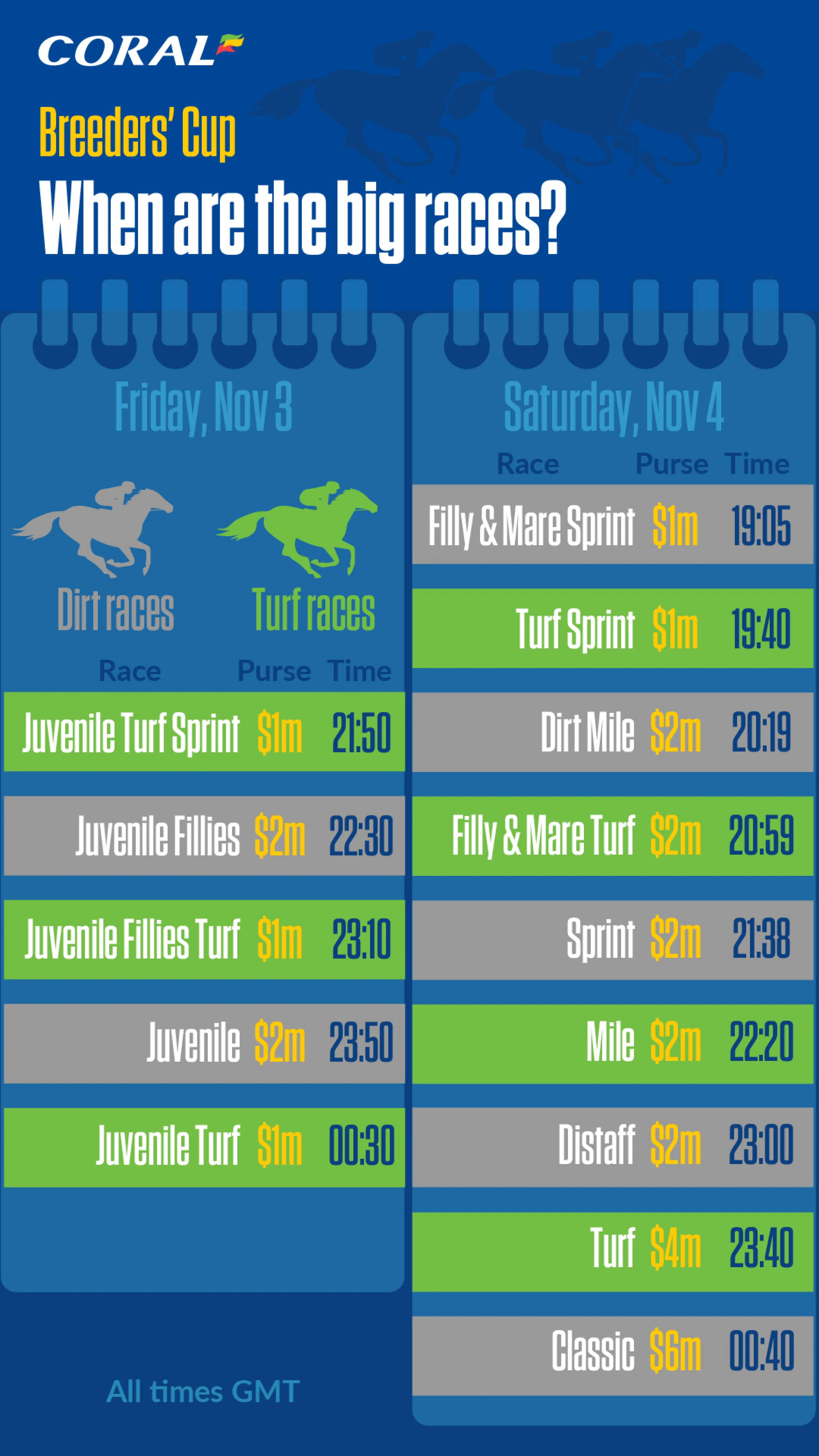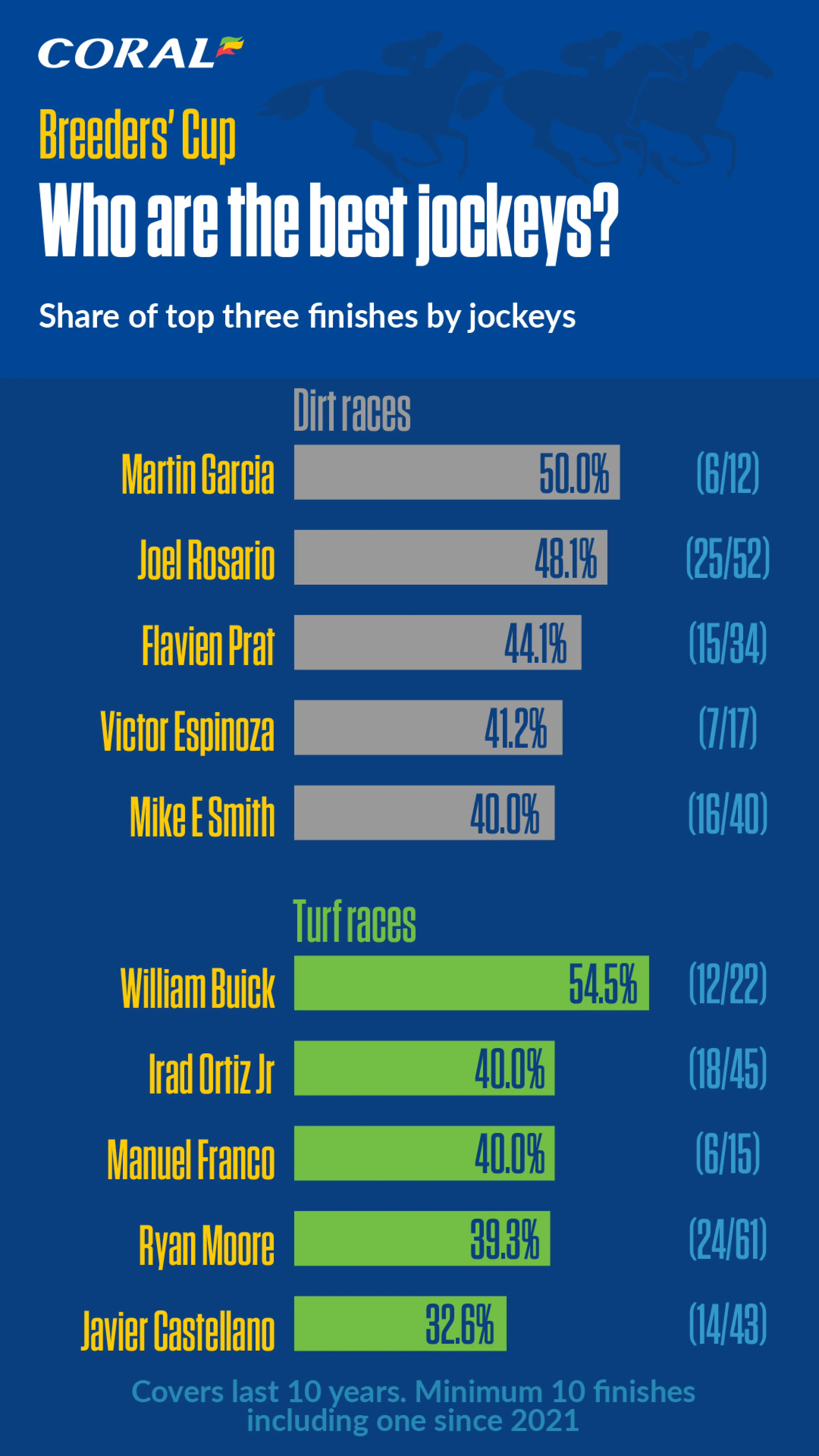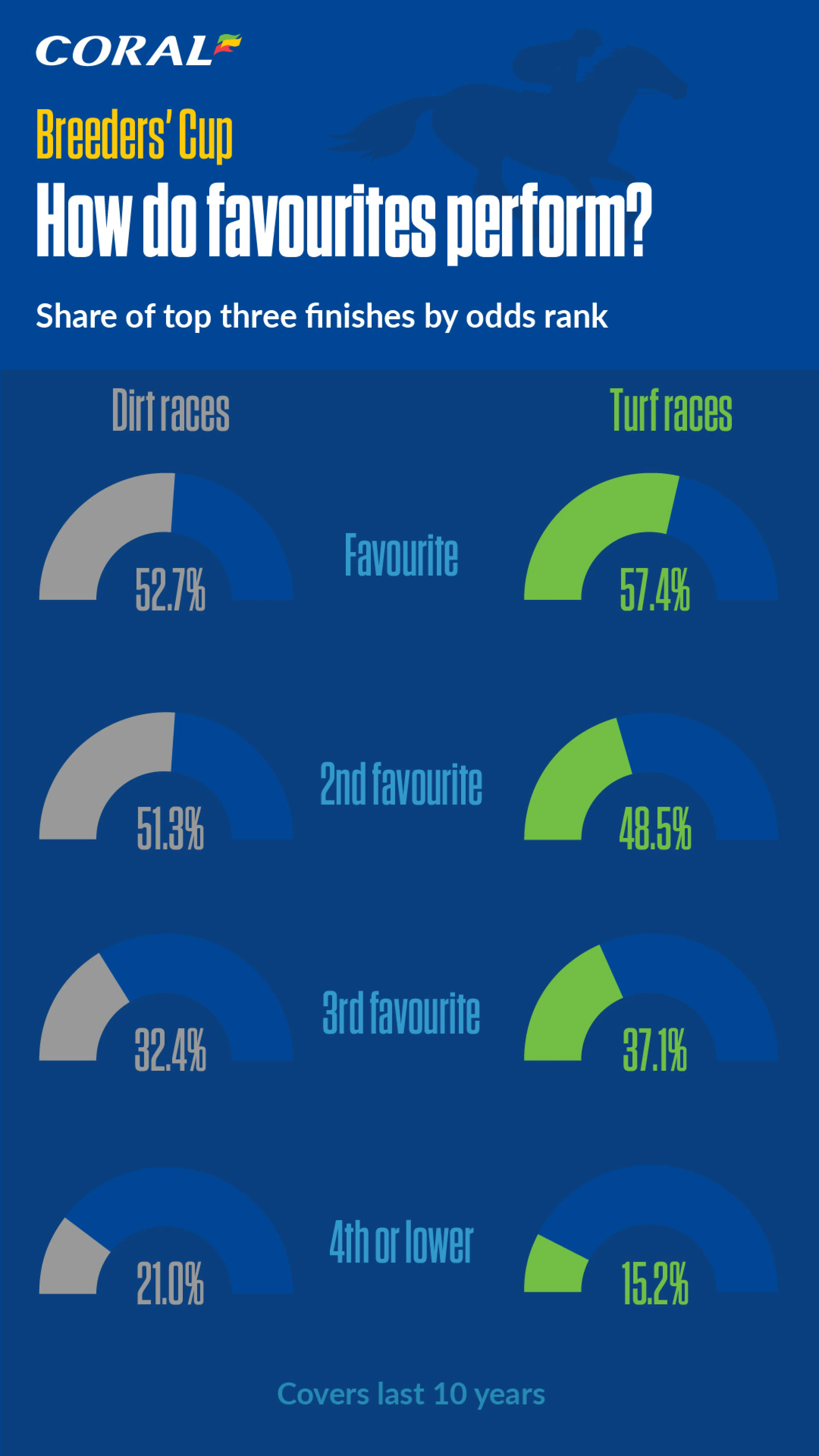Breeders’ Cup races: Crunching the numbers from the past decade
Published:
Undoubtedly one of the biggest events in American horse racing, the Breeders’ Cup is celebrating its 40th year this weekend.
The meeting is returning to its spiritual home – Santa Anita Park, California – in 2023, following a three-year absence. Santa Anita will be hosting for a record 11th time, with Churchill Downs the next-most popular venue on nine.
We have pulled together a comprehensive guide of what to expect as the horse racing world descends on the US west coast.
When are the big Breeders’ Cup races?
Since 2007, the Breeders’ Cup has been contested across two days, with this year’s meeting taking place on Friday, November 3 and Saturday, November 4.
The action starts on ‘Future Stars Friday’ with five juvenile races – the first of which is just before 10pm UK time – in which two-year-old horses compete for a total of $7m in prize money.

Saturday is more than three times as lucrative with a total purse of $22m shared between nine races, the first of which begins shortly after 7pm.
The final two races are the most prestigious, with a combined $10m at stake in the Breeders’ Cup Turf and Breeders’ Cup Classic.
Who are the best Breeders’ Cup jockeys?
Using results from the last decade, we have identified the leading Breeders’ Cup jockeys in both dirt and turf races.
Mexican rider Martin Garcia tops the list on dirt, with six podium finishes in 12 starts including four victories – two in the Sprint, one in the Juvenile and one in the Classic. Garcia edges the prolific Joel Rosario on podium percentage, with Rosario having placed in just under half (25) of his 52 races since 2013.
The legendary Mike E Smith is the most successful jockey in Breeders’ Cup history with 27 wins, 25 further top threes and $38.3m won across 150 starts. Now aged 58, Smith continues to hold his own against the best in the world, with 16 podiums in his past 40 dirt races.

On turf, William Buick – a four-time British Classic winner – has led the way in the last 10 years. The 35-year-old has six Breeders’ Cup wins to his name, with an overall podium percentage of 55 per cent from 22 starts.
No other rider with at least 10 rides since 2013 has a success rate above 40 per cent. The retiring Frankie Dettori is the top turf jockey of all-time in Breeders’ Cup races, with 14 wins, 17 further podium finishes and $25.8m in prize money. However, Dettori has placed in fewer than a quarter of his rides in the last decade.
Who are the best Breeders’ Cup trainers?
Dirt races tend to be dominated by American stables, with all of the top five trainers in the last 10 years being based on the other side of the Atlantic.
Kentucky’s Brad H Cox leads the way with 10 top threes in his last 19 starts, including a remarkable seven wins since 2018. Similarly, any horse trained at Bob Baffert’s Hollywood Park stables – just a stone’s throw from Santa Anita – is worth considering, with 25 of his previous 60 entries having made the rostrum.

Home advantage means little on turf, however, with Britain’s Charlie Appleby and Ireland’s Aidan O’Brien both ranking among the most successful trainers over the past decade.
Appleby has a remarkable record of 12 top threes from his last 18 starts, nine of which have been victories. The Newmarket trainer has won the Juvenile Turf three times since 2013, the Mile and the Turf twice apiece, as well as the Juvenile Turf Sprint and the Filly & Mare Turf.
How do favourites perform?
UK-based punters could be forgiven for following the Breeders’ Cup odds when it comes to picking a winner, with this tried-and-trusted strategy paying dividends more often than not over the past decade.
The favourite has a better than 50 per cent success rate in both dirt and turf races since 2013, but some races have proven easier to price than others.
The Juvenile Fillies ranks among the trickiest races to call, with only two of the last 10 favourites crossing the line first and seven winners having been priced outside the top three. This includes last year’s victor Wonder Wheel, who won as fourth-favourite while the top-rated Chop Chop finished a distant 13th.

Meanwhile, the Breeders’ Cup Turf and the Filly & Mare Turf have seen the favourite place most consistently, although neither tends to be won outright by the most-fancied horse.
Does age make a difference?
While the five Juvenile races on the Friday are all restricted to two-year-olds, Saturday’s action is open to horses of all ages.
Recent results suggest that younger horses are worth backing in the longer Breeders’ Cup races, while their older counterparts do comparatively well in the sprints.
In all-aged races run over a distance of at least seven furlongs, only five out of 70 winners since 2013 have been aged six or older. By contrast, five of the 20 winners of the five-furlong Turf Sprint and the six-furlong Sprint have come from that age group.
This includes the seven-year-old Whitmore – winner of the Sprint in 2020 – and the eight-year-old Obviously, who held off younger rivals on its way to victory in the Turf Sprint in 2016.

The longest and most prestigious Breeders’ Cup races – the Classic (10 furlongs) and the Turf (12 furlongs) – have been won exclusively by three to five-year-olds since 2013.









